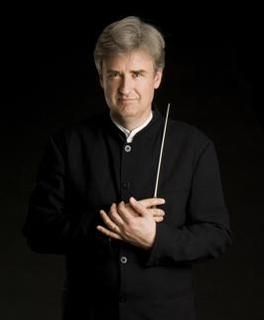|
Back
History’s Mysteries New York
David Geffen Hall, Lincoln Center
02/14/2019 - & February 15*, 16, 2019
Carl Nielsen: Helios Overture, Op. 17
Ludwig van Beethoven: Piano Concerto No. 3 in C Minor, Op. 37
Robert Schumann: Symphony No. 2 in C Major, Op. 61
Stephen Hough (piano)
New York Philharmonic, Thomas Dausgaard (conductor)

T. Dausgaard (© Ulla-Carin Eckblom)
“Eric Sams has shown that the ‘injury’ to Schumann’s finger which he incurred in the early 1830’s...could very well have been a side effect, in the form of muscular paresis, of treatment by mercury, which was the standard treatment for syphilis in that era.”
Dr. Eliot Slater, Schumann’s Illness
“More than 160 years after his death, the city of Düsseldorf is going to convert the former home of Robert Schumann into a permanent museum. Schumann ended his relationship with the city, where he had been music director for four years, with an attempted suicide in February 1854. The composer was carted off to an insane asylum and the city erased him from public memory, apart from a small placard on his house at Bilkerstrasse 15. Now it is spending 3.2 million Euros on creating a museum, which will open in 2020. According to some estimates, Schumann composed about one-third of his mature works in the Düsseldorf house.”
Norman Lebrecht
Why did Schumann jump into the Rhine in 1854? What drove this complex genius to attempt self-destruction? We will never know for sure, but clearly he was tormented for at least part of his time on earth. Today’s program was a substitution for an event scheduled wherein former music director Zubin Mehta was to present works of Anton Webern, to which some of us were excitedly looking forward, but life interferes and so Danish conductor Dausgaard made his Philharmonic debut instead.
Former chief conductor Alan Gilbert has strong ties to Denmark and presented a superb Nielsen festival not long ago. Although he is off to Hamburg now, his troops still have a feel for Danish sensibilities. This concert began with the under-represented Dane (at least in America). The Helios Overture started badly. I have a good friend in California who says that I spend too much time writing about the horns, but the reason for this is that the Phil has had horn trouble for decades. Amazingly enough, the horns, instead of opening the overture in unison, each came in a second or two after the first note. This sloppiness has been a scourge of this ensemble for so long now that it is simply expected. But it should not be tolerated.
There were quite a few empty seats in the hall this day (the Webern effect, I’m afraid) and this emphasizes the courage of Maestro van Zweden, who recently announced that the ensemble would feature in its premiere week next season Schoenberg’s monodrama Erwartung. I’ll be there, but many others will not.
A considerably smaller orchestra came out for the concerto and it played quite adroitly. For me the cadenza in the first movement of the Beethoven Piano Concerto No. 3, composed in 1800, is the true beginning of modern music. It is not like anything written by Haydn or Mozart but rather the first “modern” exploration of a theme and its children. For better or worse, music would never be the same again.
Overall the ensemble was excellent, although some of the dynamics in the first movement were a bit sing-song. However, when Mr. Hough presented that amazing cadenza with a great deal of power and glory and followed up with trills that produced thrills, this was a superb listening experience. The crowd erupted in very enthusiastic applause (rather unusual for the often phlegmatic New York audience), however Mr. Hough did not reciprocate with an encore (also highly unusual).
The Schumann piece begins with (uh-oh!) trumpets and, true to form, instead of being together, they each came in a microsecond apart. Really, can’t the Phil just go across the courtyard and bring over some Juilliard students instead? Anyway, the rest of the troops were spot on, the violins, led by Principal Associate Concertmaster Sheryl Staples, played so expertly in the Allegro vivace that they received some applause (a smattering) even though it was but the middle of the piece. I have resisted using the phrase “something rotten in Denmark”, but there did seem to be a disconnect between conductor and orchestra. One wonders how much rehearsal time they spent on a piece that might have been considered already familiar to everyone in the band. In any case the Adagio espressivo was really quite beautiful. So all’s well that ends well.
Fred Kirshnit
|